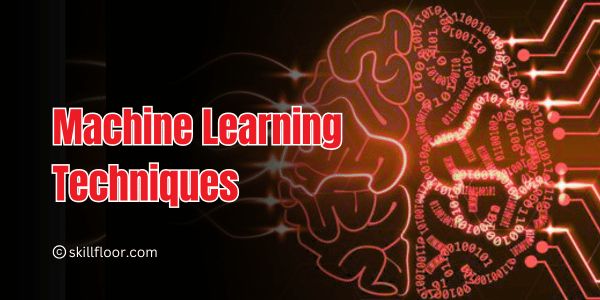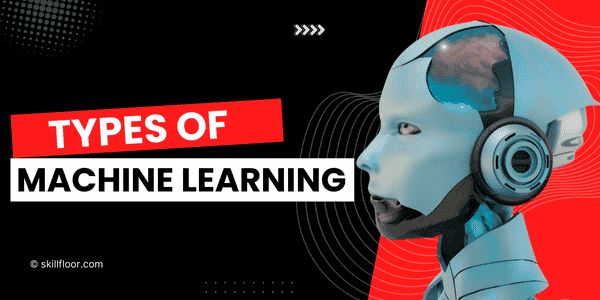Machine Learning Techniques
Explore machine learning techniques like supervised, unsupervised, and reinforcement learning, solving real-world problems while tackling data and ethical challenges.

When I first started exploring machine learning, I was overcome by more techniques and concepts. It felt like jumping into an ocean without a map. But as I looked further., I realized each technique serves a unique purpose, addressing specific challenges differently. Today, I want to share my understanding of machine learning techniques in a way that simplifies the complexity and shows how they can be applied to solve real-world problems.
Understanding the Basics of Machine Learning
Before learning the techniques, let’s start with the basics. Machine learning is a branch of artificial intelligence (AI) where computers learn from data to make predictions or decisions without being explicitly programmed. At its core, machine learning is about finding patterns in data and using those patterns to make informed decisions.
There are three main types of machine learning:
-
Supervised Learning
-
Unsupervised Learning
-
Reinforcement Learning
Each of these categories contains a variety of techniques that address different types of problems. Let’s explore them in detail.
Supervised Learning: Teaching Machines with Labeled Data
Supervised learning was my first introduction to machine learning, and it’s one of the most widely used approaches. Here, the model learns from labeled data—data where the input is paired with the correct output. For example, if we’re training a model to predict house prices, the input might include features like square footage and location, and the output would be the actual price of the house.
Some of the most popular supervised learning algorithms include:
1. Linear Regression
Linear regression is like the gateway drug to machine learning. It’s simple but powerful for predicting continuous values. For instance, I once used linear regression to predict monthly electricity bills based on historical data. By fitting a straight line through the data points, the model could estimate future bills fairly accurately.
2. Logistic Regression
Despite its name, logistic regression is used for classification problems, not regression. It’s ideal for binary outcomes like spam detection (is this email spam or not?). I used logistic regression in a project to classify customer reviews as either positive or negative. It’s straightforward but incredibly effective.
3. Decision Trees and Random Forests
Decision trees are intuitive because they mimic human decision-making processes. Imagine deciding whether to take an umbrella based on weather forecasts—a decision tree works similarly. Random forests take it further by combining multiple decision trees to improve accuracy and reduce overfitting. I used random forests to predict loan defaults in a financial dataset, and the results were remarkably accurate.
4. Support Vector Machines (SVMs)
SVMs are powerful for classification tasks, especially when the data isn’t linearly separable. They use a hyperplane to separate classes in higher-dimensional spaces. Although they require careful tuning, I’ve seen them work wonders in image classification tasks.

Applications of Supervised Learning
Supervised learning techniques are everywhere:
-
Predicting customer churn
-
Diagnosing diseases from medical images
-
Fraud detection in banking
Unsupervised Learning: Exploring Unlabeled Data
When I first encountered unsupervised learning, I was both fascinated and puzzled. Unlike supervised learning, there are no labels to guide the model. Instead, the goal is to uncover hidden patterns or structures in the data.
1. K-Means Clustering
K-means clustering was my entry point into unsupervised learning. It groups data points into clusters based on their similarity. For example, I once used K-means to segment customers based on purchasing behavior. This helped identify different customer groups, enabling targeted marketing strategies.
2. Hierarchical Clustering
Hierarchical clustering builds a tree of clusters, which can be visualized as a dendrogram. It’s particularly useful when you want to see the relationships between clusters. I’ve used this technique to analyze social media interactions, revealing interesting patterns of engagement.
3. Principal Component Analysis (PCA)
PCA is a dimensionality reduction technique that simplifies datasets while preserving the most important information. It’s invaluable when working with high-dimensional data. For example, in a face recognition project, PCA helped reduce the complexity of the image dataset without losing essential features.
Applications of Unsupervised Learning
Unsupervised learning is often used for:
-
Customer segmentation
-
Market basket analysis
-
Anomaly detection
Semi-Supervised Learning: The Best of Both Worlds
Semi-supervised learning is a hybrid approach that combines labeled and unlabeled data. It’s particularly useful when labeled data is scarce or expensive to obtain.
Self-Training
Self-training involves using a small amount of labeled data to train an initial model, which then labels the unlabeled data. I’ve used self-training to classify web pages with limited labeled data, and it significantly improved the results compared to using only supervised learning.
Graph-Based Models
These models use graph structures to represent relationships between data points. They’re effective for tasks like community detection in social networks. Although I’ve only experimented with these techniques, I’ve seen their potential in recommendation systems.
Applications of Semi-Supervised Learning
Semi-supervised learning shines in areas like:
-
Medical diagnosis (with limited labeled data)
-
Text classification
-
Image recognition
Reinforcement Learning: Learning Through Rewards
Reinforcement learning is perhaps the most exciting category for me. It’s like teaching a dog new tricks—the model learns by interacting with its environment and receiving rewards or penalties.
Q-Learning
Q-learning is a classic reinforcement learning algorithm that uses a Q-table to store the best actions for each state. I experimented with Q-learning to train an AI agent to play simple games like Tic-Tac-Toe. It was fascinating to watch the agent improve its strategy over time.
Deep Q-Networks (DQN)
DQN combines reinforcement learning with deep learning, enabling agents to handle complex environments. Although I’ve only scratched the surface, DQN is the foundation for breakthroughs like AlphaGo.
Applications of Reinforcement Learning
Reinforcement learning powers:
-
Robotics (teaching robots to walk or manipulate objects)
-
Game AI (e.g., defeating world champions in board games)
-
Autonomous vehicles
Advanced Machine Learning Techniques
As I delved deeper into machine learning, I discovered advanced techniques that push the boundaries of what’s possible.
1. Deep Learning
Deep learning uses neural networks with multiple layers to process complex data. Some key types of neural networks include:
-
Convolutional Neural Networks (CNNs): Perfect for image and video data. I used a CNN to build a model that could identify objects in images, and the results were stunning.
-
Recurrent Neural Networks (RNNs): Designed for sequential data like time series or text. I experimented with an RNN to predict stock prices, which was a challenging but rewarding experience.
-
Transformers: The backbone of modern NLP models like GPT. Transformers revolutionized how machines understand and generate text, and I’ve been amazed by their capabilities.
2. Ensemble Methods
Ensemble methods combine multiple models to improve accuracy. Two popular approaches are:
-
Bagging (e.g., Random Forest): Reduces variance by averaging predictions.
-
Boosting (e.g., Gradient Boosting, AdaBoost): Focuses on correcting errors from previous models.
In a recent project, I used Gradient Boosting to predict customer lifetime value, and the performance boost was remarkable.
3. Transfer Learning
Transfer learning leverages pre-trained models for new tasks. For example, I used a pre-trained ResNet model to classify images in a custom dataset. It saved me weeks of training and delivered excellent results.
Emerging Trends
New techniques like federated learning, explainable AI (XAI), and generative models (e.g., GANs) are shaping the future of machine learning. I’m particularly excited about XAI, as it addresses the black-box nature of AI models, making them more transparent and trustworthy.

Choosing the Right Technique
One of the biggest challenges I faced was deciding which technique to use. Here are some factors that helped me make the right choice:
-
Type of data: Is it labeled, unlabeled, or a mix?
-
Problem type: Is it classification, regression, or clustering?
-
Resources: Do I have enough computational power and data?
Experimentation is key. I often try multiple techniques and tune the parameters to find the best fit.
Real-World Applications of Machine Learning Techniques
Machine learning is transforming industries:
-
Healthcare: Diagnosing diseases from medical images.
-
Finance: Detecting fraudulent transactions.
-
E-commerce: Personalizing recommendations.
-
Transportation: Enabling autonomous vehicles.
I’ve worked on projects in some of these areas, and it’s incredible to see how machine learning is solving complex problems.
Challenges and Limitations
As exciting as machine learning is, it comes with its own set of challenges and limitations:
-
Data Quality and Quantity Issues Machine learning models are only as good as the data they are trained on. Inadequate or poor-quality data can lead to inaccurate models. In one of my projects, missing values and inconsistent data formats created significant hurdles during preprocessing.
-
Overfitting and Underfitting Striking the right balance between overfitting (where the model is too specific to the training data) and underfitting (where it fails to capture patterns) can be tricky. I’ve spent countless hours tuning models to achieve generalization without sacrificing accuracy.
-
Ethical Concerns Bias, fairness, and explainability are critical issues in machine learning. Models trained on biased data can perpetuate societal inequalities. Additionally, black-box models make it hard to explain decisions to stakeholders. Addressing these concerns is essential for building trust in AI systems.
Machine learning offers powerful tools to solve real-world problems, from predicting outcomes to finding patterns in data. It’s transforming industries like healthcare and finance, but challenges like poor data, overfitting, and ethical concerns need attention. With emerging trends like explainable AI, the future of machine learning is full of exciting possibilities.






























































